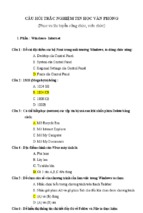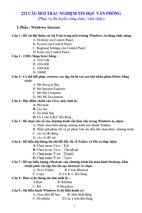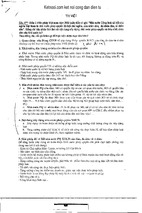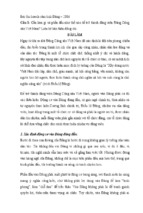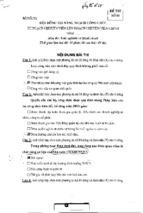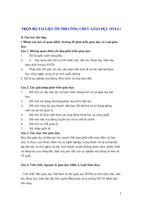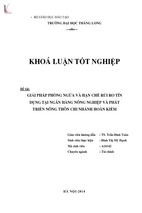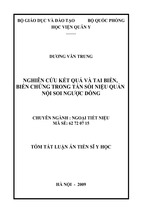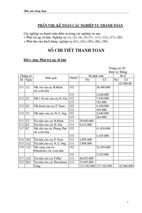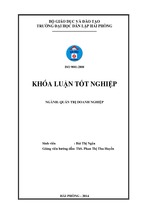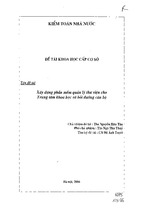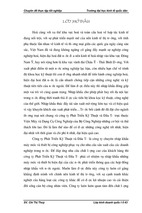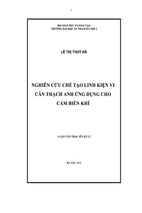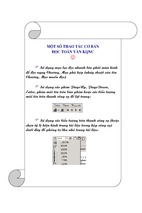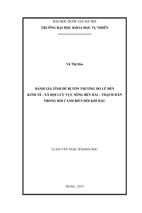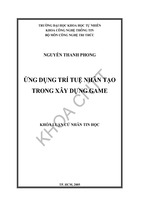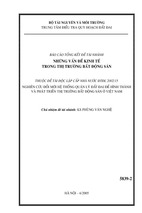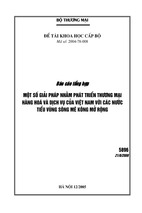Table of Contents Link
ExamWise®
Volume 1
CFA 2008 Level I Certification
With Preliminary Reading Assignments The
Candidates Question And Answer Workbook For
Chartered Financial Analyst
Authors
Jane Vessey, CFA
M. Afdal Pamilih, CFA
David Stewart
Published by
TotalRecall Publications, Inc.
1103 Middlecreek
Friendswood, TX 77546
281‐992‐3131
TotalRecall Publications, Inc.
This Book Sponsored by The Center For Financial Certification, Inc.
Portions Copyright © 1999‐2008 by TotalRecall Publications, Inc.. Portions Copyright © 2005‐2006 by
Pegasus, Inc.. All rights reserved. Printed in the United States of America. Except as permitted under
the United States Copyright Act of 1976, No part of this publication may be reproduced, stored in a
retrieval system, or transmitted in any form or by any means electronic or mechanical or by
photocopying, recording, or otherwise without the prior permission of the publisher.
The views expressed in this book are solely those of the author, and do not represent the views of any
other party or parties.
Printed in United States of America, Canada, and England
Paper Back:
ISBN: 978‐1‐59095‐945‐9
UPC: 6‐43977‐93703‐2
EBook:
ISBN: 978‐1‐59095‐948‐0
UPC: 6‐43977‐93763‐6
The sponsoring editor for this book is Bruce Moran and the production supervisor is Corby R. Tate.
This publication is not sponsored by, endorsed by, or affiliated with CFA Institute™, CFA®, and
their logo are trademarks or registered trademarks of CFA Institute.org in the United States and
certain other countries. All other trademarks are trademarks of their respective owners. Throughout
this book, trademarked names are used. Rather than put a trademark symbol after every occurrence
of a trademarked name, we used names in an editorial fashion only and to the benefit of the
trademark owner. No intention of infringement on trademarks is intended.
The CFA Institute™ does not endorse, promote or review the accuracy of the products or services
offered by organizations sponsoring or providing CFA® Exam preparation materials or programs,
nor does CFA Institute™ verify pass rates or exam results claimed by such organizations. Any
warranty regarding the offered products or services is made solely by TotalRecall Publications, Inc.,
which are not in any way affiliated with CFA Institute™, the Institute of Chartered Financial Analysts
(ICFA), or the Financial Analysts Federation (FAF). If you are dissatisfied with the products or
services provided, please contact, TotalRecall Publications, Inc. 1103 Middlecreek, Friendswood, TX
77546 (888‐237‐7849). CFA® is a licensed service mark of CFA Institute™. Used by permission.
Disclaimer Notice: Judgments as to the suitability of the information herein for purchaser’s purposes
are necessarily the purchaser’s responsibility. TotalRecall Publications, Inc. and The Financial
Certification Center, Inc. extends no warranties, makes no representations, and assumes no
responsibility as to the accuracy or suitability of such information for application to the purchaser’s
intended purposes or for consequences of its use.
This book is dedicated to our fantastic children Adam and Julia who we love very much.
Jane Vessey & M. Afdal Pamilih
This Study Guide is dedicated to the widow(er)s and orphans of the “Silent Spring”. Those who have
sacrificed loved ones to the obscurity of quiet study and endured weekend sacrifice above and
beyond the call of continuing education. On the alter of a profession’s highest accreditation these
unsung heroes have sacrificed time with their spouse, shopping with Mom, and pitch and catch with
Dad. These patient supporters have endured tense attitudes, unfinished chores, extra duties, and
received the respect and appreciation of all who have studied throughout the “Silent Spring”.
In particular, never ending thanks to:
Carol Lee, Mary Elizabeth, Sophia Victoria, David Todd II
David Stewart
ExamWise®
Volume 1
CFA 2008 Level I Certification
With
Preliminary Reading Assignments
The Candidates Question And Answer Workbook
For Chartered Financial Analyst
BY
Authors
Jane Vessey, CFA
M. Afdal Pamilih, CFA
David Stewart
Jane Vessey
Jane Vessey manages a training company in the United Kingdom specializing in financial analysis
and investment. She is a visiting lecturer at Cass Business School teaching classes in asset
management and valuation. She also teaches a CFA® revision course at ISMA (the business school at
Reading University) and is an associate at a leading London financial training company where she
teaches courses covering investment management and related topics. She has developed online
training programs for students taking the CFA examinations and teaches CFA courses for UKSIP (the
UK Society of Investment Professionals).
Jane graduated in Mathematics from Oxford University, United Kingdom, and is a CFA charter
holder. She has some eighteen years experience working in the investment industry, starting out as
an equity analyst before becoming an investment manager. She was based in London and Tokyo and
took responsibility for managing equity portfolios invested in the Japanese and other Asian markets.
In 1990, Jane moved to Indonesia and established and ran an investment management operation on
behalf of Mees Pierson. She took responsibility for all areas of the business, including investment,
operations, marketing and administration. While in Asia, Jane was involved in providing training to
capital market participants and state officials and teaching in courses provided by local universities.
M. Afdal Pamilih
Afdal has 18 yearsʹ experience working in the finance industry. He started his career with J.P.
Morgan, and then with County NatWest Government Securities, in New York specializing in the
development of quantitative products for foreign exchange and fixed income markets. After
returning to Indonesia in 1989 he was responsible for the development of investment services and
subsequently treasury management for leading banks in Jakarta.
Afdal has developed web‐based training programs for the CFA examinations and has wide teaching
experience, including instructing at the School of Management, University of Surrey, United
Kingdom.
He obtained a MSc in Mathematics from the University of Texas at Arlington and holds the
Chartered Financial Analyst (ʺCFAʺ) qualification.
David Stewart:
David Stewart has extensive experience in venture capital and business structural reorganizations. As
president of a private client broker dealer firm, he has business valuation and project valuation
experience on the venture capital side and portfolio management on the asset management side. His
analysis, commentary, books, and study guides have appeared in the financial management,
securities, and exam prep industries.
David has collaborated with experts in the field to produce the 2001 through 2006 editions of this
study guide. His extensive research into the CFA exam program and past exam histories, field work,
and consistent review of CFA Institute information allows him and his co‐authors to deliver high
quality and up to date information.
About the Book:
ExamWise Volume 1 For CFA Level I Concept Check Q&A Workbook With Preliminary Reading
Assignments is designed to give you plenty of practice questions to test your readiness for the CFA
exam. It offers 400+ concept check questions based 18 exam study sessions that cover the Learning
Outcome Statements and their associated CFA Assigned Readings. For additional practice, there is an
accompanying free download test engine that generates multiple mock exams similar in design and
difficulty to the real CFA exam. The questions and explanations have references to the page number
in the related Reading and to the related LOS.
Use this workbook to test your understanding of the basic concepts covered in the CFA Readings and
identify your strengths and weaknesses. Then you can move on to more advanced study materials to
sharpen your weakest knowledge areas.
This book is divided into Study Sessions (1 – 18) that cover the 76 Learning Outcome Statements and
the associated Assigned Readings. Appendix A (Exhibits 1 – 4), is a collection of exhibits and flow
charts for condensed reference and review, including examples of accounting statements, puts and
calls, PE breakdown, and financial ratios.
The 18 2008 CFA Level I Study Sessions breakout is as follows:
Ethical and Professional Standards
1.
Study Session 1: Ethical and Professional Standards
Investment Tools
2.
3.
4.
5.
6.
7.
8.
9.
10.
11.
Study Session 2. Quantitative Methods: Basic Concepts
Study Session 3. Quantitative Methods: Application
Study Session 4. Economics: Microeconomic Analysis
Study Session 5. Economics: Market Structure and Macroeconomic Analysis
Study Session 6. Economics: Monetary and Fiscal Economics
Study Session 7. Financial Statement Analysis: Introduction
Study Session 8. Financial Statement Analysis: Income Statement, Balance Sheet, Cash
Study Session 9. Financial Statement Analysis: Inventories, Assets, Taxes, and Debt
Study Session 10. Financial Statement Analysis: Techniques, Apps, & International
Study Session 11. Corporate Finance
Portfolio Management
12. Study Session 12. Portfolio Management
Asset Valuation
13.
14.
15.
16.
17.
18.
Study Session 13. Analysis of Equity Investments: Securities Markets
Study Session 14. Analysis of Equity Investments: Industry and Company Analysis
Study Session 15. Analysis of Fixed Income Investments: Basic Concepts
Study Session 16. Analysis of Fixed Income Investments: Analysis and Valuation
Study Session 17. Derivative Investments
Study Session 18. Alternative Investments Equity Investments: Securities Markets
Online Information:
1. What is CFA Institute
http://www.cfainstitute.org/aboutus/index.html
2. CFA Program:
http://www.cfainstitute.org/cfaprogram
3. The Code of Ethics (Full Text)
http://www.cfainstitute.org/centre/ethics/code/
The Standards of Professional Conduct
Standard I: Fundamental Responsibilities
Standard II: Relationships with and Responsibilities to the Profession
Standard III: Relationships with and Responsibilities to the Employer
Standard IV: Relationships with and Responsibilities to Clients and Prospects
Standard V: Relationships with and Responsibilities to the Public
4. Why The CFA Designation Matters to You: Individual Investor FAQ
http://www.cfainstitute.org/aboutus/investors/articles/cfamatters.html
5. Soft Dollar Standards
http://www.cfainstitute.org/centre/ethics/softdollar/
6. CFA Institute-PPSTM AIMR Performance Presentation Standards
http://www.cfapubs.org/doi/ref/10.2469/faj.v57.n2.2433
7. Global Investment Performance Standards
http://www.cfainstitute.org/centre/ips/
Click the picture and link to a free CFA Candidates online glossary.
List of Chapters
Study Session 01:
Ethical and Professional Standards:
Study session 02:
Quantitative Methods:
Study Session 03:
Quantitative Methods:
Study Session 4:
Introduction
Study Session 04:
Economics:
Study Session 05:
Economics:
Study Session 06:
Economics:
Study Session 7:
Introduction
Study Session 07:
Financial Statement Analysis:
Study Session 08:
Financial Statement Analysis:
Study Session 09:
Financial Statement Analysis:
Study Session 10:
Financial Statement Analysis:
Study Session 11:
Corporate Finance:
Study Session 12:
Portfolio Management:
Study Session 13:
Equity Investments:
Study Session 14:
Equity Investments:
Study Session 15:
Fixed Income Investments:
Study Session 16:
Fixed Income Investments:
Study Session 17:
Derivative Investments:
Study Session 18:
Alternative Investments:
Terminology:
Appendix A:
Download Instructions
14
34
60
84
112
136
160
184
198
222
248
274
300
330
354
378
402
426
450
474
501
503
526
With the purchase of this book you get FREE Author Collaberation:
Now that you have purchased this product you have access to the Instructors/Authors that authored
this book. Send you questions to us and we will answer them for you.
Table of Contents IX
Table of Contents
About the Book:........................................................................................................................... VI
Online Information:..................................................................................................................... VII
Study Session 01:
Ethical and Professional Standards:
14
Reading 1: Code of Ethics and Standards of Professional Conduct ..........................................14
Reading 2: “Guidance” for Standards I–VII.................................................................................14
Reading 3: Introduction to the Global Investment Performance Standards (GIPS) ...................14
Reading 4: Global Investment Performance Standards (GIPS) .................................................14
Study session 02:
Quantitative Methods:
34
Basic Concepts ................................................................................................................................34
Reading 5: The Time Value of Money ........................................................................................34
Reading 6: Discounted Cash Flow Applications .........................................................................34
Reading 7: Statistical Concepts and Market Returns .................................................................34
Reading 8: Probability Concepts.................................................................................................34
Study Session 03:
Quantitative Methods:
60
Application .......................................................................................................................................60
Reading 9: Common Probability Distributions ............................................................................60
Reading 10: Sampling and Estimation........................................................................................60
Reading 11: Hypothesis Testing .................................................................................................60
Reading 12: Technical Analysis ..................................................................................................60
Study Session 4:
Introduction
84
Introductory Readings......................................................................................................................84
Supply, Demand, and the Market Process CH 5.............................................................................84
Introduction..................................................................................................................................84
Consumer choice and the Law of Demand.................................................................................85
Producer choice and the Law of Supply .....................................................................................85
Price changes and demand and supply......................................................................................86
Shifts in demand .........................................................................................................................87
Shifts in supply ............................................................................................................................88
Impact of changes in demand and supply ..................................................................................88
Supply and Demand: Applications and Extensions CH 4................................................................90
Introduction..................................................................................................................................90
Resources ...................................................................................................................................90
Elasticity and the incidence of tax ...............................................................................................91
Taking the Nation’s Economic Pulse CH 7 ......................................................................................92
X Table of Contents
Introduction ................................................................................................................................. 92
Gross domestic product.............................................................................................................. 92
Working with Our Basic Aggregate Demand/ Aggregate Supply Model CH 10.............................. 96
Introduction ................................................................................................................................. 96
Aggregate demand ..................................................................................................................... 96
Keynesian Foundations of Modern Macroeconomics CH 11........................................................ 100
Introduction ............................................................................................................................... 100
Keynesian economics............................................................................................................... 100
Introductory Readings Concept Check Questions ............................................................... 104
Introductory Readings Concept Check Answers.................................................................. 108
Study Session 04:
Economics:
112
Microeconomic Analysis................................................................................................................ 112
Reading 13: Elasticity ............................................................................................................... 112
Reading 14: Efficiency and Equity............................................................................................ 112
Reading 15: Markets in Action.................................................................................................. 112
Reading 16: Organizing Production.......................................................................................... 112
Reading 17: Output and Costs ................................................................................................. 112
Study Session 05:
Economics:
136
Market Structure and Macroeconomic Analysis............................................................................ 136
Reading 18: Perfect Competition.............................................................................................. 136
Reading 19: Monopoly.............................................................................................................. 136
Reading 20: Monopolistic Competition and Oligopoly.............................................................. 136
Reading 21: Demand and Supply in Factor Markets................................................................ 136
Reading 22: Monitoring Cycles, Jobs, and the Price Level ...................................................... 136
Reading 23: Aggregate Supply and Aggregate Demand ......................................................... 136
Study Session 06:
Economics:
160
Monetary and Fiscal Economics ................................................................................................... 160
Reading 24: Money, Banks, and the Federal Reserve............................................................. 160
Reading 25: Money, Interest, Real GDP, and the Price Level ................................................. 160
Reading 26: Inflation................................................................................................................. 160
Reading 27: Fiscal Policy ......................................................................................................... 160
Reading 28: Monetary Policy.................................................................................................... 160
Study Session 7:
Introduction
184
Introductory Readings ................................................................................................................... 184
Measuring Business Income ......................................................................................................... 184
Introduction ............................................................................................................................... 184
Table of Contents XI
Accounting methods..................................................................................................................184
Financial Reporting and Analysis ..................................................................................................185
Introduction................................................................................................................................185
Balance Sheet ...........................................................................................................................185
Income statement......................................................................................................................186
Inventories .....................................................................................................................................187
Introduction................................................................................................................................187
Inventory....................................................................................................................................187
Inventory cost ............................................................................................................................187
Effect of inventory accounting method......................................................................................188
Current Liabilities and the Time Value of Money...........................................................................190
Introduction................................................................................................................................190
Liabilities....................................................................................................................................190
Contributed Capital ........................................................................................................................191
Introduction................................................................................................................................191
Contributed capital ....................................................................................................................191
Accounting for dividends ...........................................................................................................191
Common stock ..........................................................................................................................191
Preferred stock ..........................................................................................................................191
Stock issuance ..........................................................................................................................192
Treasury stock...........................................................................................................................192
The Corporate Income Statement and the Statement of Stockholders’ Equity .............................192
Introduction................................................................................................................................192
Retained earnings .....................................................................................................................192
Accounting for stock dividends and stock splits........................................................................192
Introduction
Concept Check Questions................................................................................193
Introduction
Concept Check Answers ..................................................................................195
Study Session 07:
Financial Statement Analysis:
198
An Introduction...............................................................................................................................198
Reading 29: Financial Statement Analysis: An Introduction .....................................................198
Reading 30: Financial Reporting Mechanics ............................................................................198
Reading 31: Financial Reporting Standards .............................................................................198
Study Session 08:
Financial Statement Analysis:
222
The Income Statement, Balance Sheet, and Cash Flow Statement .............................................222
Reading 32: Understanding the Income Statement ..................................................................222
Reading 33: Understanding the Balance Sheet........................................................................222
XII Table of Contents
Reading 34: Understanding the Cash Flow Statement ............................................................ 222
Study Session 09:
Financial Statement Analysis:
248
Inventories, Long-Term Assets, Deferred Taxes, and On- and Off-Balance Sheet Debt ............. 248
Reading 35: Analysis of Inventories ......................................................................................... 248
Reading 36: Analysis of Long-Lived Assets: ............................................................................ 248
Part I—The Capitalization Decision.......................................................................................... 248
Reading 37: Analysis of Long-Lived Assets: ............................................................................ 248
Part II—Analysis of Depreciation and Impairment.................................................................... 248
Reading 38: Analysis of Income Taxes .................................................................................... 248
Reading 39: Analysis of Financing Liabilities ........................................................................... 248
Reading 40: Leases and Off-Balance-Sheet Debt ................................................................... 248
Study Session 10:
Financial Statement Analysis:
274
Techniques, Applications, and International Standards Convergence ......................................... 274
Reading 41: Financial Analysis Techniques............................................................................. 274
Reading 42: Financial Statement Analysis: Applications ......................................................... 274
Reading 43: International Standards Convergence ................................................................. 274
Study Session 11:
Corporate Finance:
300
Reading 44: Capital Budgeting ................................................................................................. 300
Reading 45: Cost of Capital...................................................................................................... 300
Reading 46: Working Capital Management.............................................................................. 300
Reading 47: Financial Statement Analysis ............................................................................... 300
Reading 48: The Corporate Governance of Listed Companies: .............................................. 300
A Manual for Investors.............................................................................................................. 300
Study Session 12:
Portfolio Management:
330
Reading 49: The Asset Allocation Decision.............................................................................. 330
Reading 50: An Introduction to Portfolio Management............................................................. 330
Reading 51: An Introduction to Asset Pricing Models .............................................................. 330
Study Session 13:
Equity Investments:
354
Securities Markets ......................................................................................................................... 354
Reading 52: Organization and Functioning of Securities Markets ........................................... 354
Reading 53: Security-Market Indexes ...................................................................................... 354
Reading 54: Efficient Capital Markets ...................................................................................... 354
Reading 55: Market Efficiency and Anomalies ......................................................................... 354
Study Session 14:
Equity Investments:
378
Industry and Company Analysis.................................................................................................... 378
Reading 56: An Introduction to Security Valuation: Part I ........................................................ 378
Table of Contents XIII
Reading 57: Industry Analysis...................................................................................................378
Reading 58: Equity: Concepts and Techniques........................................................................378
Reading 59: Company Analysis and Stock Valuation...............................................................378
Reading 60: An Introduction to Security Valuation: Part II........................................................378
Reading 61: Introduction to Price Multiples ..............................................................................378
Study Session 15:
Fixed Income Investments:
402
Basic Concepts ..............................................................................................................................402
Reading 62: Features of Debt Securities ..................................................................................402
Reading 63: Risks Associated with Investing in Bonds ............................................................402
Reading 64: Overview of Bond Sectors and Instruments .........................................................402
Reading 65: Understanding Yield Spreads...............................................................................402
Reading 66: Monetary Policy in an Environment of Global Financial Markets .........................402
Study Session 16:
Fixed Income Investments:
426
Analysis and Valuation...................................................................................................................426
Reading 67: Introduction to the Valuation of Debt Securities ...................................................426
Reading 68: Yield Measures, Spot Rates, and Forward Rates ................................................426
Reading 69: Introduction to the Measurement of Interest Rate Risk ........................................426
Study Session 17:
Derivative Investments:
450
Reading 70: Derivative Markets and Instruments .....................................................................450
Reading 71: Forward Markets and Contracts ...........................................................................450
Reading 72: Futures Markets and Contracts ............................................................................450
Reading 73: Option Markets and Contracts..............................................................................450
Reading 74: Swap Markets and Contracts ...............................................................................450
Reading 75: Risk Management Applications of Option Strategies ...........................................450
Study Session 18:
Alternative Investments:
474
Reading 76: Alternative Investments ........................................................................................474
Terminology:
Appendix A:
Download Instructions
501
503
526
14 Study Session 01:
Study Session 01: Ethical and Professional
Standards:
The readings in this study session present a framework for ethical conduct in the investment
profession by focusing on the CFA Institute Code of Ethics and Standards of Professional Conduct as
well as the Global Investment Performance Standards (GIPS®).
The principles and guidance presented in the CFA Institute Standards of Practice Handbook (SOPH)
form the basis for the CFA Institute self‐regulatory program to maintain the highest professional
standards among investment practitioners. “Guidance” in the SOPH addresses the practical
application of the Code of Ethics and Standards of Professional Conduct. The guidance reviews the
purpose and scope of each standard, presents recommended procedures for compliance, and
provides examples of the standard in practice.
The Global Investment Performance Standards (GIPS) facilitate efficient comparison of investment
performance across investment managers and country borders by prescribing methodology and
standards that are consistent with a clear and honest presentation of returns. Having a global
standard for reporting investment performance minimizes the potential for ambiguous or misleading
presentations.
Reading 1: Code of Ethics and Standards of Professional Conduct
Reading 2: “Guidance” for Standards I–VII
Reading 3: Introduction to the Global Investment Performance Standards (GIPS)
Reading 4: Global Investment Performance Standards (GIPS)
Ethical and Professional Standards 1
1. Jason Vasco, CFA, is the director for a major Talia‐owned investment management firm branch in
Rasen. Talia is known as the world’s centre of investment management with securities laws stricter
than the CFA Institute Code and Standards, and Vasco is governed by Talia’s laws. In Rasen, an
emerging market, the local securities laws and regulations are lenient. They are very vague in the
definition of insider trading and have no provision regulating soft‐dollars. Which of the following is
most accurate?
A.
Vasco must comply with Talia’s law.
B.
Vasco only has to comply with Rasen’s law and therefore can take the fullest advantage
of soft‐dollar arrangements.
C. Vasco should not worry about Rasen’s law, it is an early stage emerging market and the
law enforcement will be lax, if any at all.
D. As a CFA Institute member, Vasco must only comply with the Code and Standards
regarding insider trading and soft‐dollar arrangements.
2. As an expression of gratitude, Tracy Blanc, CFA, a portfolio manager, is invited to spend a three‐
week vacation valued at $10,000 with her spouse in a luxurious resort owned by a wealthy private
client after she skillfully protected the value of the client’s capital during a severe market downturn.
The private client is a fee‐paying client of Blanc’s firm. According to Standard IV(B) – Disclosure of
Additional Compensation Arrangements:
A.
Blanc must refuse the invitation as it may jeopardize her investment judgment.
B.
Blanc is recommended to donate the monetary value of the vacation to a charity of her
choice.
C. Blanc may accept such an invitation as long as she reports it in writing to her employer
and gains their approval.
D. Blanc may accept the invitation if she reports it in writing to CFA Institute citing the full
monetary value of the vacation.
2 Study Session 01:
1. Jason Vasco, CFA, is the director for a major Talia‐owned investment management firm branch in
Rasen. Talia is known as the world’s centre of investment management with securities laws stricter
than the CFA Institute Code and Standards, and Vasco is governed by Talia’s laws. In Rasen, an
emerging market, the local securities laws and regulations are lenient. They are very vague in the
definition of insider trading and have no provision regulating soft‐dollars. Which of the following is
most accurate?
A.
Vasco must comply with Talia’s law.
B.
Vasco only has to comply with Rasen’s law and therefore can take the fullest advantage of softdollar arrangements.
C.
Vasco should not worry about Rasen’s law, it is an early stage emerging market and the law
enforcement will be lax, if any at all.
D.
As a CFA Institute member, Vasco must only comply with the Code and Standards regarding
insider trading and soft-dollar arrangements.
Correct Answer:
A
LOS: Reading 2‐b
Standard I (A) stipulates that in foreign jurisdictions members must comply with the stricter of the
applicable laws and the Code of Standards, in this case Talia’s law is the strictest.
Reference: CFA® Program Curriculum, Volume 1, pp. 15‐17.
2. As an expression of gratitude, Tracy Blanc, CFA, a portfolio manager, is invited to spend a three‐
week vacation valued at $10,000 with her spouse in a luxurious resort owned by a wealthy private
client after she skillfully protected the value of the client’s capital during a severe market downturn.
The private client is a fee‐paying client of Blanc’s firm. According to Standard IV(B) – Disclosure of
Additional Compensation Arrangements:
A.
Blanc must refuse the invitation as it may jeopardize her investment judgment.
B.
Blanc is recommended to donate the monetary value of the vacation to a charity of her choice.
C.
Blanc may accept such an invitation as long as she reports it in writing to her employer and gains
their approval.
D.
Blanc may accept the invitation if she reports it in writing to CFA Institute citing the full monetary
value of the vacation.
Correct Answer:
C ...................................................................................................... Reading 2‐b
Blanc needs to report in writing the additional compensation so her supervisor and the firm can assess
whether it is potentially a conflict of interest. If there is no objection she is free to accept the invitation.
Reference: CFA® Program Curriculum, Volume 1, pp. 75‐76.
Ethical and Professional Standards 3
3. Kevin Dudman, CFA, has just been offered an exciting new position with Walton Asset
Management and decides that he will resign from his current position with Trust Asset Management.
Before he resigns he decides to ensure that he uses some of the skills and materials he has developed
at Trust Asset Management. He is least likely to violate the Code and Standards, if he takes:
A.
stock market analysis prepared by Dudman when he was working at Trust Asset
Management.
B.
internal contact information on Trust Asset Management‘s major clients which is available
from other eternal sources.
C.
computer models developed to identify mispriced securities developed by Dudman and a
colleague at Trust Asset Management.
D.
experience in pricing unlisted securities which he gained while attending training courses
which were paid for by Trust Asset Management.
4. Joseph Morgon, CFA, is a research analyst covering the Bourgogne Vineyard Corporation.
Morgon’s parents bought $50 worth of Bourgogne Vineyard Corporation shares for his two‐year old
son on his birthday. Under Standard VI(A), Disclosure of Conflicts, Morgon:
A.
must file a report with the SEC.
B.
must sell the shares immediately.
C.
must disclose the ownership of the shares by a member of his immediate family.
D.
does not need to disclose the fact that his son owns the shares of Bourgogne Vineyard
Corporation.
4 Study Session 01:
3. Kevin Dudman, CFA, has just been offered an exciting new position with Walton Asset
Management and decides that he will resign from his current position with Trust Asset Management.
Before he resigns he decides to ensure that he uses some of the skills and materials he has developed
at Trust Asset Management. He is least likely to violate the Code and Standards, if he takes:
A.
stock market analysis prepared by Dudman when he was working at Trust Asset Management.
B.
internal contact information on Trust Asset Management‘s major clients which is available from
other eternal sources.
C.
computer models developed to identify mispriced securities developed by Dudman and a colleague
at Trust Asset Management.
D.
experience in pricing unlisted securities which he gained while attending training courses which
were paid for by Trust Asset Management.
Correct Answer:
D ........................................................................................... LOS: Reading 2‐b
Models and research which he worked on when employed by Trust Asset Management belong to Trust
Asset Management. Client contact details should not be taken from his employer, although he is not
prohibited from collecting client information from outside sources. However skills and experience gained
at Trust Asset Management can be used in his new job, so D is the correct answer.
Reference: CFA® Program Curriculum, Volume 1, pp. 69‐74.
4. Joseph Morgon, CFA, is a research analyst covering the Bourgogne Vineyard Corporation.
Morgon’s parents bought $50 worth of Bourgogne Vineyard Corporation shares for his two‐year old
son on his birthday. Under Standard VI(A), Disclosure of Conflicts, Morgon:
A.
B.
C.
D.
must file a report with the SEC.
must sell the shares immediately.
must disclose the ownership of the shares by a member of his immediate family.
does not need to disclose the fact that his son owns the shares of Bourgogne Vineyard Corporation.
Correct Answer:
D ........................................................................................... LOS: Reading 2‐b
The share ownership is not likely to be material and therefore will not reasonably affect Morgon’s ability to
make unbiased and objective recommendation according to Standard VI(A) Disclosure of Conflicts.
Reference: CFA® Program Curriculum, Volume 1, pp. 89‐94.
- Xem thêm -

